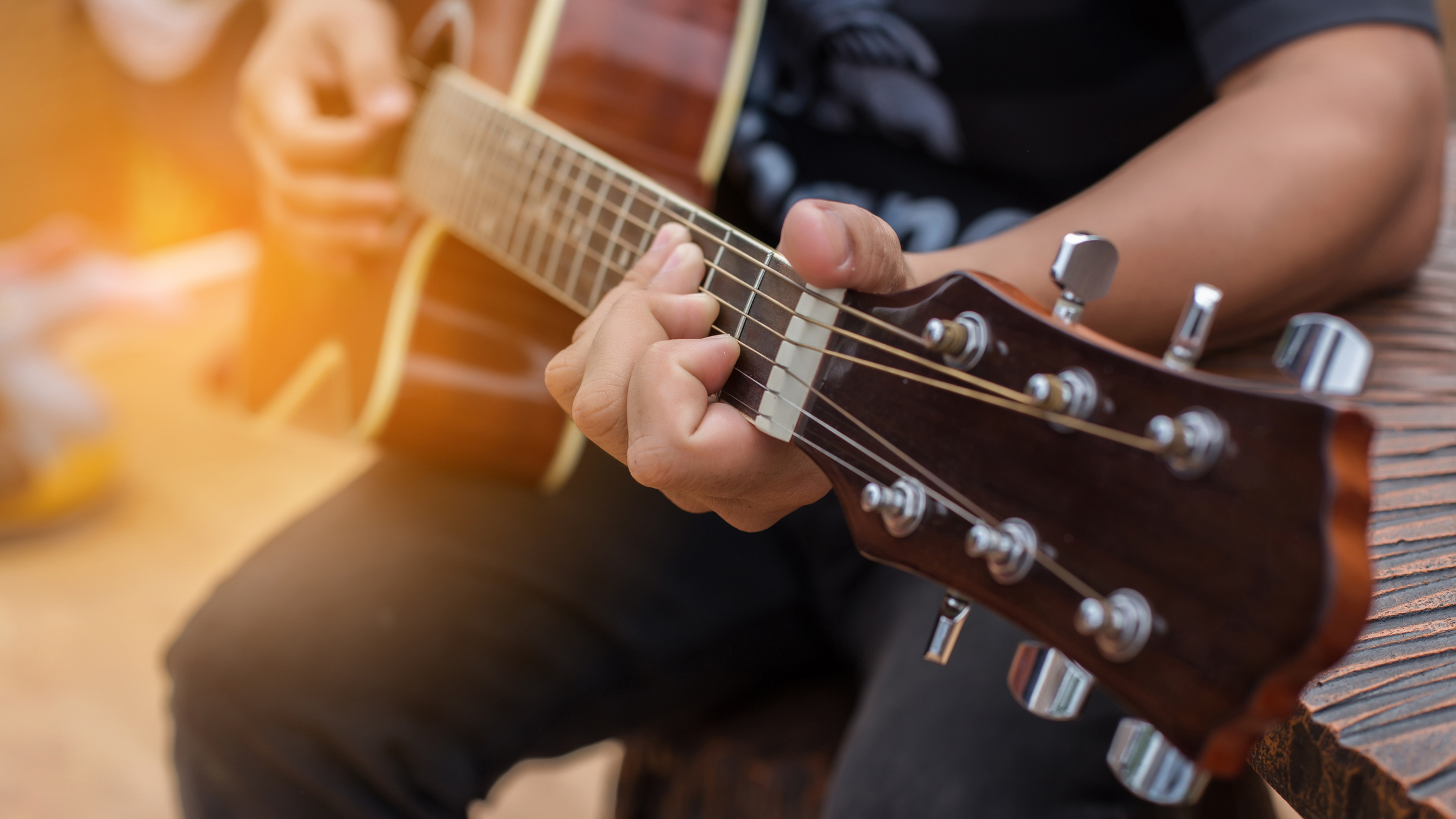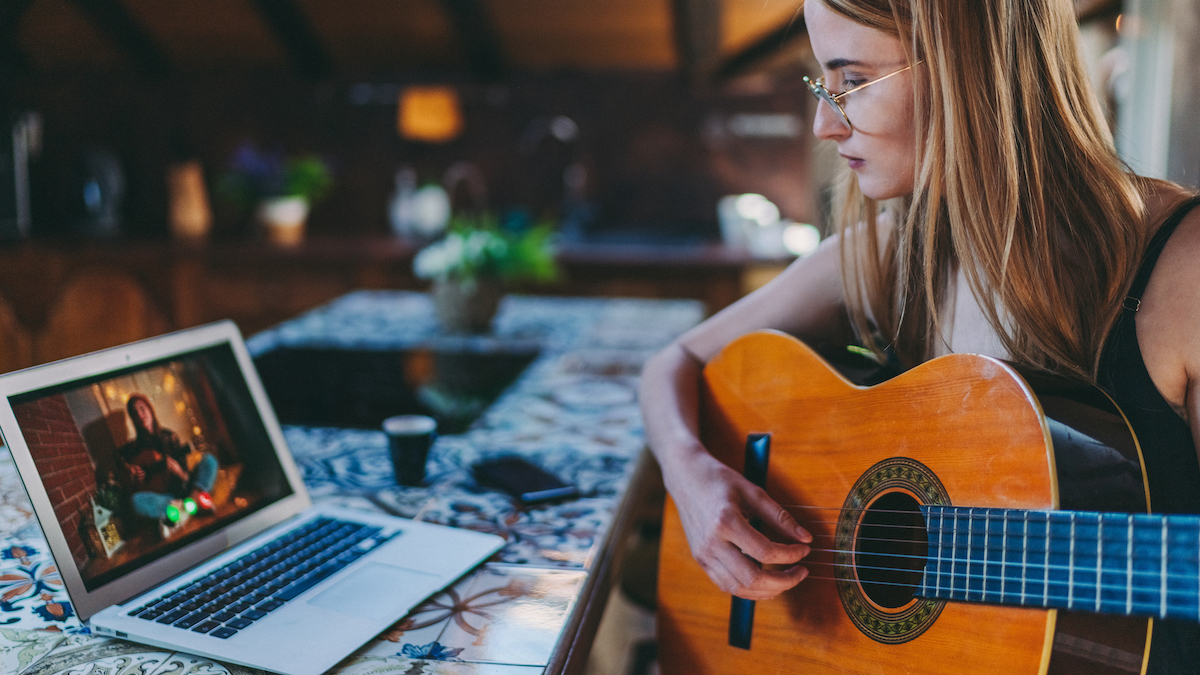“The good news is there’s not much between you and Joni Mitchell – besides thousands of hours of practice, a little music industry luck, and, of course, these first few furtive steps…”: Where to start with learning acoustic guitar
From picking out your first acoustic to navigating early lessons, we break down the first steps to getting up and running with your new favorite instrument

To borrow a song title from Radiohead’s worst album, anybody can play guitar. The world is full of virtuosic talents and genre-pushing pioneers, but they all had to start from the same place: knowing absolutely nothing about the instrument they would come to partially define.
You might be planning to start your own journey with the acoustic guitar, but feeling a little awe-struck by the potential of the instrument. The good news is there’s not that much between you and Joni Mitchell – besides thousands of hours of practice, a little music industry luck, and, of course, these first few furtive steps into learning the acoustic guitar.
So, if you want to learn the guitar, and feel a little bit of decision paralysis about the whole thing, you are in precisely the right place.
Step 1: Buying your first guitar
Where else to start but with the guitar itself? Every budding guitarist needs one. You might be content with borrowing one from a friend or family member, but in my opinion having an instrument to call your own is important. Learning on your own guitar also enables you to learn your guitar, and how it feels in your hands – allowing you to get more familiar with your instrument over time.
Buying your first acoustic can be a difficult expense to navigate, though. It’s hard to justify spending a decent amount on an instrument you might not reliably love, particularly if you’re not sure you’ll stick to learning yet. Thankfully, your first guitar needn’t be a pricey one!
All you need is something that fits the size of your body, that intonates well and that holds its tune. Intonation refers to how well your guitar keeps tune at different points of the neck, and is impacted by a few things – including quality of materials, and quality control. In short, rather than picking the cheapest possible learner acoustic, you should consider an entry-level acoustic from a brand with name recognition.
There are many great acoustic guitars for beginners out there, but a good starting point might be Fender’s range of beginner-friendly instruments, in which you’ll find a variety of well-made models covering different sizes and sounds. Across all brands, different models of guitar will feel different in your hands – neck type being a key variable for beginners.
Get The Pick Newsletter
All the latest guitar news, interviews, lessons, reviews, deals and more, direct to your inbox!
Narrow-necked acoustics might be easier to get your hands around initially, but if you feel a bit fat-fingered to begin with you might prefer the space a wide-necked guitar gives you. Ideally, you’d be in a bricks-and-mortar shop trying out guitars for how they feel in your hand – but don’t think too hard about this! There’s no “right answer”; what matters is you end up with a guitar that you, fundamentally, like.
Step 2: Invest in a few essential accessories
The guitar is really all you need to get started learning, but there are some essential accessories you should buy alongside your guitar to make your life a little easier. One such accessory is a strap, which enables you to play comfortably while standing up. Another would be a guitar tuner; while there are many free guitar tuner apps available for your smartphone, a clip-on tuner is far more convenient (and dramatically reduces the chance of you getting distracted by ‘the apps’ mid-practice).
Your guitar’s strings will need changing eventually, and regularly thereafter, even if you’re not playing on them often. Whether finger-sweat, general crud or exposure to natural humid air, your guitar strings will inevitably begin to degrade through oxidation – resulting in difficulty keeping in tune and a less-than-pleasant ‘flat’ sound.
Learning how to change your guitar’s strings for the first time is an adventure all of its own, and one aided by some simple provisions: fresh acoustic guitar strings (naturally), some wire snips, and a string winder for speedily engaging your tuning pegs. Oh, and our guide to re-stringing an acoustic guitar!
Last but not least, you may want to stock up on guitar picks. These are many and varied, and can come in handy even if you’re determined to learn fingerstyle. However many you intend to buy, double it; they’re cheap, as you will inexplicably lose more than you expect to.
Step 3: Don’t rush your development
Before you start to think about capital 'L' learning, you should take a little time just to get familiar with your guitar – its weight and dimensions, how it feels on your lap or hanging from your shoulder by its strap. Comfort and familiarity are hugely helpful for learning the acoustic guitar – something which goes for the theoretical as much as the tangible.
This means you should consider familiarizing yourself with the chromatic scale, and which strings on your guitar are tuned to which notes. Knowing that, conventionally, guitar strings are numbered 6 to 1, lowest-pitch to highest-pitch, and knowing the standard EADGBE guitar tuning, will reduce some basic barriers between you and those first difficult lessons.
Generally speaking, it can be helpful to gen up on some basic music theory before you begin. This might elicit some groans, particularly from those who have preconceived notions of music theory as a restrictive academic framework. Theory isn’t the ‘stern Principal’ of music, though; it’s simply a way to give specific concepts a vocabulary. This makes it easier for you to eventually express your ideas to other musicians, or indeed to understand what your guitar tutor or learner’s handbook is on about in the first place. Speaking of which…
Step 4: Getting lessons

If you want to learn somewhat formally, with a human tutor, you’ve two essential options: learning online, or in person. Online guitar lessons greatly increase the pool of potential tutors, but video calls introduce a level of abstraction to learning that can be difficult for beginners to circumvent. In-person lessons, meanwhile, can be much more tactile, and much more productive. If you’re an active, hands-on learner, you might benefit from being in the room, and having some three-dimensional fingers to mirror. But these lessons can be more expensive, and also more difficult to organize around a busy life schedule.
Of course, the variable that matters most is the tutor you pick. There needs to be some synergy between you, whether in music taste, playing style or mode of learning, to ensure you get the most of your sessions. This is why many tutors will offer you a free trial lesson, so you can get a taste of how they work.
Step 5: Self-led practice
Formal lessons are incredibly instructive (duh), but not a necessity for learning the acoustic guitar. It’ll come as no surprise to you that the internet is an incredible resource of knowledge and wisdom with respect to learning the acoustic guitar, from chord and scale guides to comprehensive libraries of chord sheets and tablature (aka ‘tab’ – an easy-to-follow, paint-by-numbers alternative to stave music) for practically any song.
Teaching yourself is simultaneously easy and hard. You can follow your nose with respect to what you want to learn, but you’ll encounter some difficulties with discipline, and the forming of bad habits. Try to keep yourself to an hour of practice a day, half of the time given to practicing the basics – getting to know basic chord shapes, running scales for finger dexterity, and practicing to a metronome for picking-accuracy and speed. It’s also good form to check in with the pros every now and then, whether via a formal guitar player’s handbook or a YouTube tutorial or two.
While anyone can indeed play guitar, there’s another truism to bear in mind: guitar is the easiest instrument to learn, and amongst the most difficult to master. A guitarist’s learning journey is never over, no matter how good they get at bashing out 'Wonderwall'. So don’t get too frustrated if you don’t feel like you’re advancing. You will, and you will also never quite be ‘done’ anyway. Enjoy the journey!

James Grimshaw is a freelance writer and music obsessive with over a decade of experience in music and audio writing. He's lent his audio-tech opinions (amongst others) to the likes of Guitar World, MusicRadar and the London Evening Standard – before which, he covered everything music and Leeds through his section-editorship of national e-magazine The State Of The Arts. When he isn't blasting esoteric noise-rock around the house, he's playing out with esoteric noise-rock bands in DIY venues across the country; James will evangelise to you about Tera Melos until the sun comes up.


![[from left] George Harrison with his Gretsch Country Gentleman, Norman Harris of Norman's Rare Guitars holds a gold-top Les Paul, John Fogerty with his legendary 1969 Rickenbacker](https://cdn.mos.cms.futurecdn.net/TuH3nuhn9etqjdn5sy4ntW.jpg)






